The cichlids are known for their brilliant coloration and intriguing behaviors among the freshwater fish species. However, they do have certain environmental requirements, most notably, those concerning habitation and territory. In their natural environments, including Lakes and rivers, Cichlids use rocks and caves as hiding places. In today’s article, we will be discussing cichlid caves and cichlid rocks, including why caves are beneficial to cichlids, how to build a cichlid cave, and which rocks are suitable to build them.
Content Table
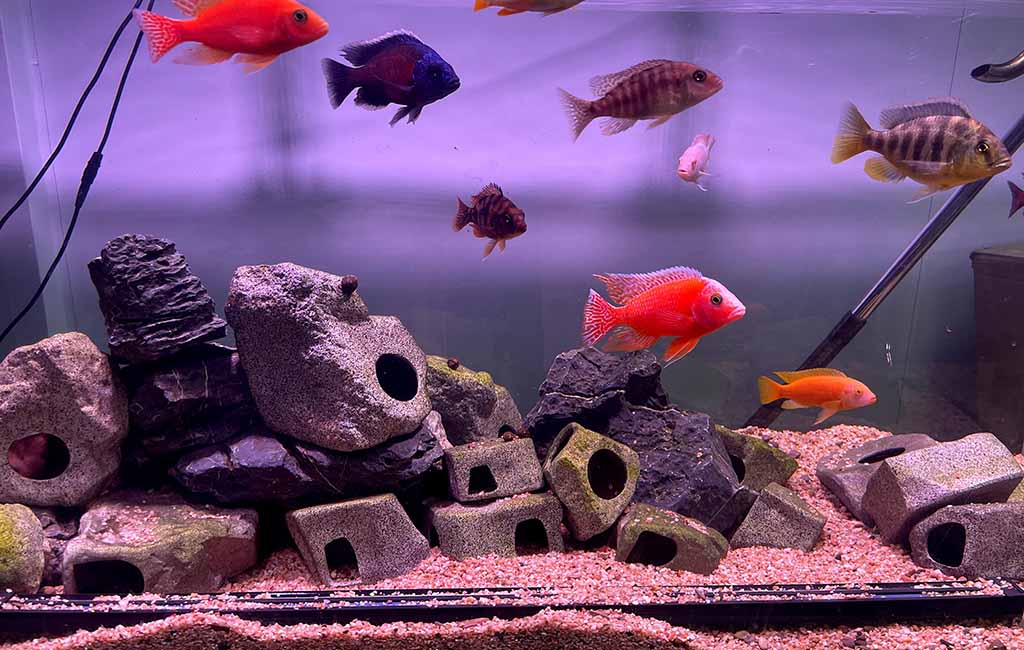
Slate Shale for African Cichlid
Cichlid Caves in Aquarium
Cichlid fish are particularly happy when they are given some space in which they can find freedom. Many of them are found living in cliffs or in caves that provide them with protection and also give them a chance to roam. In a captive environment, caves offer the following benefits for cichlids:
Hiding Spaces: All fishes, particularly cichlids, should be provided with places where they can seek refuge when stressed. They stepped into caves to find a sense of safety.
Breeding Grounds: It is noteworthy that many cichlid species are cave lovers. Making the correct structures in the cave helps in breeding, allowing them to lay eggs and protect the fry.
Natural Behavior: Among the primary features, underwater caves mimic the cichlid’s natural environment and encourage them to forage, explore, and define territories.
Without caves, your cichlids may become stressed, which results in aggression and health issues.
Which Rocks Are the Best for Cichlid Caves
When selecting the rocks to be used in your cichlid aquarium, some important factors that need to be considered are:
| The suitability of the rocks for the fish | The purpose of the rocks in the construction of caves |
Below are common types of rocks that can be used to create caves:
Slate
Slate is a heavy, fine-grained stone that can be cut into regular shapes and laid in courses. It can be found in thin, plate-like forms, which are perfect for layering and in creating horizontal chambers.
Pros:
- Slate is not harmful to aquariums, as it does not affect the pH of the water.
- Also, the flat structure of these squares makes it easier to stack them on top of one another for the formation of an elevated cluster of caves.
Cons:
- However, if placed in the wrong order, the slate may crumble and thus need to be well arranged to prevent the pieces from falling.
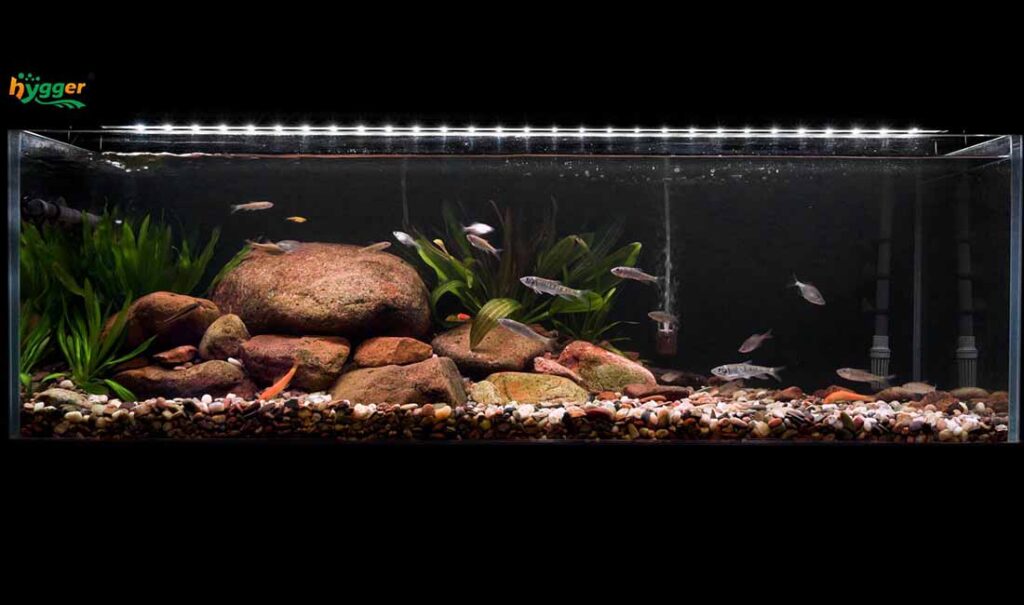
Cichlid rocks
Shale
Shale is another rock that forms in flat layers similar to slate but is slightly more friable.
Pros:
- Thus, choosing shale as the substrate can give a natural, layered appearance to an aquarium.
- It does not change the water chemistry much, which makes the water cichlid safe to have in the tank.
Cons:
- Shale is more brittle, so before using it, it is necessary to check for any signs of weakness in the pieces.
Marble
Marble is a type of metamorphic rock that is made up of calcium carbonate, and it reacts with water.
Pros:
- Due to its hardness and exquisite appearance, it gives a sophisticated touch to an aquarium and is widely applied.
Cons:
- Marble can contribute to hardness and increase the pH level of the water due to calcium.
Limestone
Limestone is a relatively soft type of rock which primarily comprises calcium carbonate.
Pros:
- It also raises the pH and increases the water hardness level which is suitable for the African cichlids species that prefer alkaline water.
- Limestone has a natural rough surface that cichlids like to probe around.
Cons:
- It is less rigid as compared to other rocks; this makes it vulnerable to breakages or wear out through time.
Texas Holey Rock
It is one of the favorites among the African cichlid breeders because this gravel features numerous holes and crevices.
Pros:
- Typically, Texas holey rock consists of many formed prior caves and tunnels.
- It increases pH and water hardness, which is great for African cichlids.
Cons:
- This type of rock is frequently more costly and less accessible relative to other rocks.
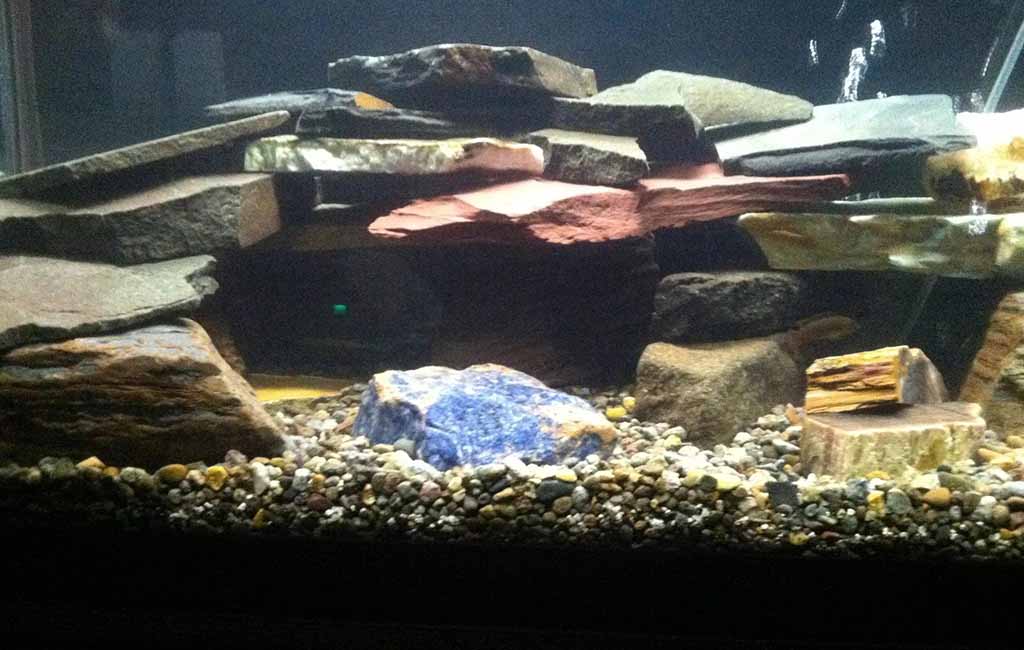
Cichlid caves
Building Caves for Cichlids
After you have selected the right rocks, the next thing is to construct the caves. Here are tips on how to build a cichlid cave safe and functional.
Plan the Layout
Although you are placing rocks for the caves in the aquarium, draw a simple plan of how the caves should be to guide you. Decide how many cavities you want and where each one would be implemented.
Prepare the Rocks
Before putting the rocks in the tank, they should be washed very well. Any dust or grime may be washed gently with a brush and hot water but make sure not to use chemical products.
If using slate or shale, confirm that the pieces can be stacked to enhance stability.
Build the Structure
The first step is to start laying a solid base, which should consist of rocks. The largest and heaviest stones should be placed at the base of the structure to act as a base.
- When moving the rocks, lay them in such a way that they form tunnels, especially if the cave is made from slate or shale. They can be placed one above the other and may be arranged horizontally to create cave-like formations.
- Secure each rock in its place by using some small-sized marbles or even glue.
- To match with the natural kind of marble or limestone designs, it is advisable to lay them in such that they form natural splits.
Test for Stability
Politely shake the rocks to ensure they do not topple over or fall. Stability must always be maintained to avoid impact which may harm the fish or destruction of the Tank.
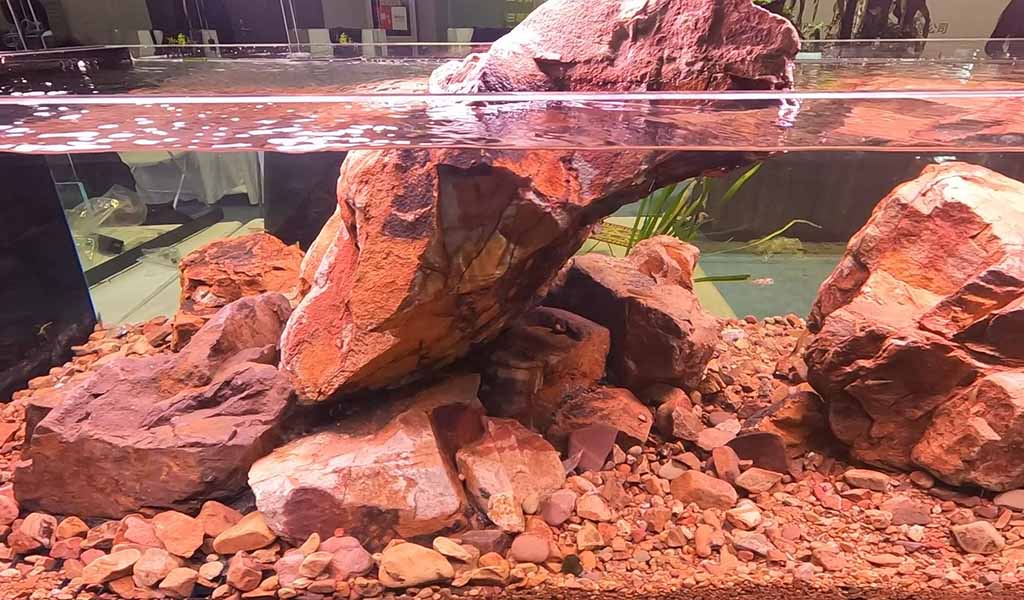
How to build a cichlid cave
Cichlid Caves Cleaning
Once everything has set in the cichlid caves, it is crucial to clean them often to allow proper functionality.
Daily Cleaning
It should be monitored regularly to ensure that bridges, floating structures, and other materials are not accumulating in the caves. Caves also lead to water pollution, since wastes or leftover food can create a mess and impact water quality. Employ a gravel vacuum to remove waste from the bottom of these caves while avoiding any impacts.
Weekly Maintenance
Once a week, ensure that the rocks are still in their correct positions and that they won’t fall off easily. If ever there are rocks that have been displaced, make sure to replace them in their proper places to mitigate the risks of accidents. If there is any algae on the rock surfaces, use an aquarium-safe sponge to wipe them off.
Monthly Deep Cleaning
Occasionally, take samples of water and analyze them so that the pH does not change the chemical composition of rock materials. If necessary, remove each rock as a larger unit to gain better access to the inner portions of the caves.
Concluding Thoughts
The construction of caves is one of the most important stages that should be carried out in creating a natural environment for cichlids. Thus, if you are going to choose cichlid rocks like slate, shale, or even marble, you can create beautiful cichlid caves that will make your fish happy and healthy. The design of cichlid caves guarantees their stability and security. A good number of cichlid cave arrangements can add aesthetic value to the aquarium and exhibit the natural behaviors of fish.
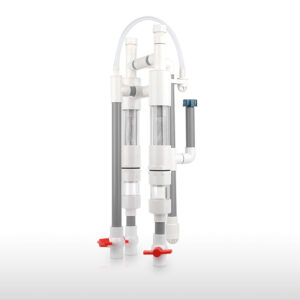

Leave a comment